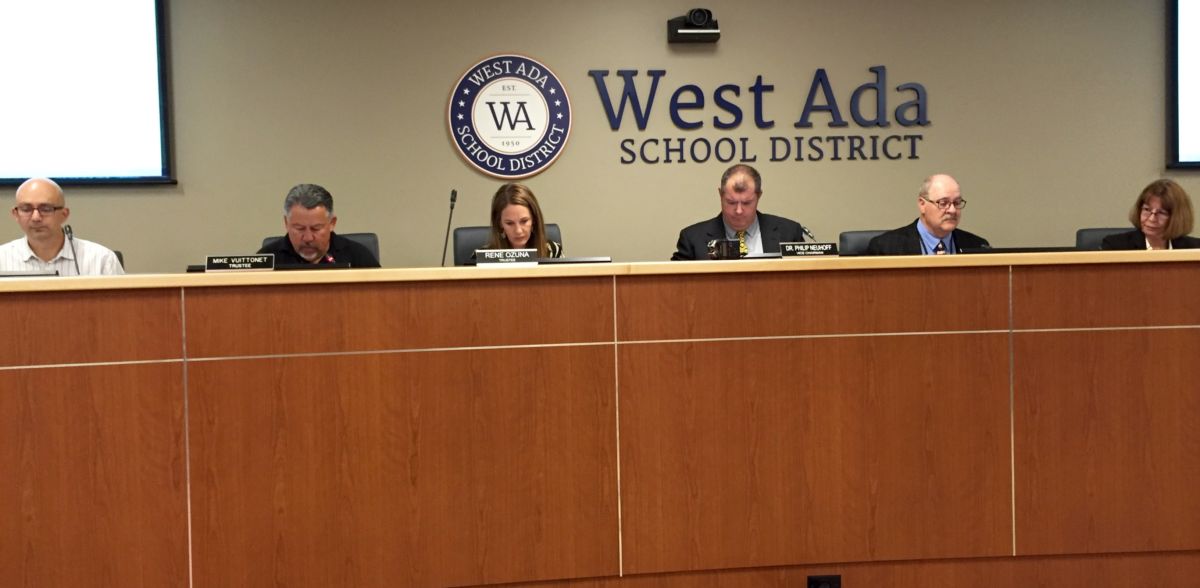Three of the state’s six largest school districts will head into the 2016-17 budget year without a contract agreement with teachers.
The immediate impact may be limited. Administrators and teachers’ unions in West Ada, Nampa and Coeur d’Alene plan to continue negotiating into July, or beyond.

July 1 marks the beginning of the new budget year for districts across Idaho. And since salaries and benefits make up the biggest line item in a district’s budget, the master contract between a district and its teachers represents a linchpin of the budget.
This year, districts have more money to carve up; the 2016 Legislature approved a 7.4 percent budget increase for K-12. Districts and teachers also have to agree on how to implement, or whether to implement, the state’s teacher career ladder. Districts don’t have to adopt the plan, passed by the 2015 Legislature and designed largely to boost pay for beginning and less-experienced teachers.
In Nampa, pay and benefits remain the sticking point; negotiations will resume on July 11, spokeswoman Allison Westfall said this week. That means teachers will receive contracts that are based on their 2015-16 salaries (except for teachers who are making the minimum salary, which will increase to $33,400 under state law). If and when negotiators agree on pay raises, teachers will receive revised contracts.
In Coeur d’Alene, administrators have proposed a 1.25 percent pay raise, while the teachers’ union has proposed a 2.9 percent increase, the Coeur d’Alene Press reported this week. Negotiations will resume Aug. 10.
In West Ada, Idaho’s largest school district, mediation is scheduled for July 15. The two sides are about $500,000 apart on salaries, spokesman Eric Exline said Thursday. Union negotiators are pushing for more money for teachers at the high end of the pay scale.
In several other districts, 2016-17 contracts are a done deal — or least they’re headed that way. Here are other thumbnails from around Idaho:
Boise: The 2016-17 agreement passed with unanimous board backing and 98.9 percent support from Boise Education Association members. Boise does not use the career ladder. Instead, the district will use the state funding increase to finance a 3 percent pay raise and cover a 10 percent increase in insurance costs.
Vallivue: It took only one negotiating session to yield an agreement. For most employees, the new master contract should mean at least a 2 percent raise, Superintendent Pat Charlton said. The district added a $500 longevity stipend for veteran employees, and a $500 “Vallivue Loyalty” stipend for employees who have been with the district for at least a decade.
Twin Falls: A tentative agreement would cover the second year of the career ladder. The agreement covers a 4 percent, across-the-board pay raise, but it also caps teacher pay at $53,000. The cap is necessary to maintain a stable budget, said Bill Brulotte, the district’s federal programs, policy and grants director. Within the next four years, about 40 percent of the district’s teachers could max out on the salary schedule — and the state won’t provide additional money for pay raises.
Cassia County: Negotiations went quickly and smoothly, said Chris James, the district’s fiscal manager. On average, teachers should see pay raises of about 4.5 percent — some higher, some lower. The district’s salary schedule is modeled after the career ladder.
Blaine County: The district settled on a master contract this spring. It’s a hold-the-line agreement: Base salaries are frozen, while the district continues to cover health benefits.
Idaho Falls: The 2016-17 agreement received 99.5 percent support from the Idaho Falls Education Association and approval from all district trustees.
A teachers’ committee created a “crosswalk,” or stepping stone, to the career ladder, district human resource and finance director Carrie Smith said. The goal was to keep top-end salaries well above the amounts allocated by the state. Teachers can top out at $60,177 in 2016-17; by 2019-20, the state has proposed a high-end salary allocation of $50,000.
Idaho Falls hopes to build a career ladder that provides enough incentive to “keep good teachers around their entire careers,” Smith said.
Madison: Like Idaho Falls, Madison School District is pushing money into top-end salaries.
As part of Madison’s career ladder, teachers in their first three “residency” years will make the state minimum of $33,400.
Meanwhile, all teachers will receive salary increases of at least 2 percent, or they will receive the same sum of money in a one-time payout.
Bonneville: The district and the teachers’ union have a deal in place. Teachers with bachelor’s degrees and 24 or more credits will receive an additional $800 from 2015-16, while teachers with master’s degrees will receive a $1,400 raise.
Some teachers will be “grandfathered” into salaries of up to $58,435.
Pocatello-Chubbuck: The district’s agreement, ratified by the teachers’ union and the school board, pays out more on the higher rungs of the career ladder. Teachers in their first three years can earn $200 more annually for holding a master’s degree, as opposed to teachers with a bachelor’s degree. At the top end of the ladder, teachers with a bachelor’s degree and an additional 24 credits can earn $14,565 more than a teacher with a bachelor’s degree.
Idaho Education News reporter Devin Bodkin contributed to this report.
